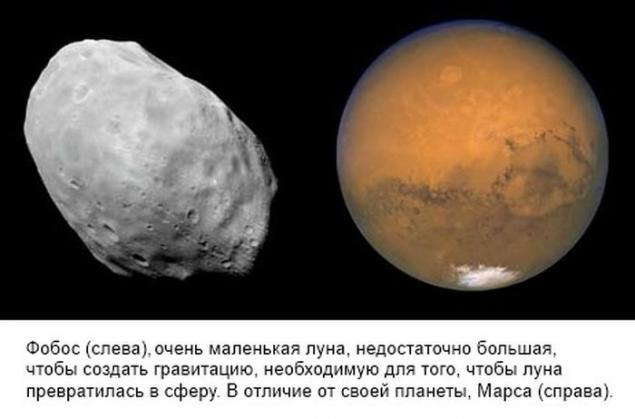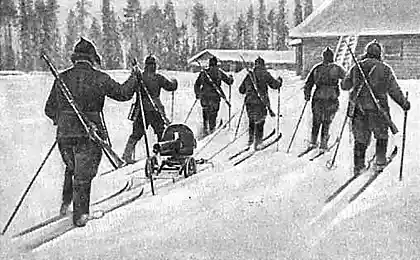1761
What would happen if the Earth were a cube?
Physicists speculate in earnest, and reflect on the question: what would happen if the Earth was not the ball, and the cube?
And indeed it would be?

The Earth is actually quite round. This is not the round thing in the world, but it is so. If Earth were the size of a basketball, our mountains and valleys would have been considerably less than pimples on a standard basketball ball. And there is a good reason why the Earth is arranged just so.
Mountains may seem one piece, but on planetary yardstick they are thinner than the soup. Freaking severity column of stone one hundred miles easily crushes the rocks at its base. One of the reasons that the mountains do not grow too high, it is erosion. But an even greater contribution to the containment of the mountains makes the fact that they tend to sag under their own weight.
As the planet becomes more and gravitational force on it increases, the weight of the materials begins to overpower the strength of materials, and the planet is pulled into the sphere.

So small planet may have cube shape (it is unlikely that it is formed in the shape of a cube but nonetheless). Planet Earth is the size of a fucking doomed to have the shape of a ball.

Life on Earth cube will be very different from that to which we are accustomed. Although the gravity on the surface will not, in general, is aimed precisely at the center of the earth (this is typical only areas), it will continue to be focused around the center. Thus, when approaching the edges of the cube, you will feel like being on a slope. That is, even though it does not look that way, the feelings each of the six faces of the cube will be a bowl. And this phenomenon will be very important consequences.

Ocean and atmosphere shall flow together to the lowest point, they will be able to achieve. Thus, in the center of each face of the cube formed a pool of about a thousand miles wide. At the same time as the oceans and the atmosphere will be several times deeper than it is now. What, in general, are not as important as you might think. Here, on a spherical Earth, if you climb to a height of about five kilometers above sea level, most of the air will be above you.
Most cubic Earth will be in the form of bare, barren rocks protruding directly into the open space. If you stand on the edge and look towards the center of the face, you can clearly see the circular bubbles of air and water, rising above the flat surface. I am sure that sight is impressive.
All life (life, which requires solid surface, anyway), is tied to a narrow ring of the coast of this huge bubble of water and the strip in one or two hundred kilometers wide.

If we assume that the cube will be oriented in space so as most of the people probably see it right now, with poles in cents two faces, two of these take the form of vesicular Sea ice caps from solid pieces of ice.
Especially curious that kubozemlya will have six completely isolated regions. There is no good reason, except for a certain version of "local panspermia", according to which life on one side of the edge would have to be associated with life on the remaining sides. If the biosphere will choose different paths of development, you can even see the nitrogen-oxygen atmosphere on one side (as we have now) and a hydrogen-nitrogen-carbon dioxide-atmosphere on the other side (like we have billions of years ago).
Small spaces will also have effect on the movement of large masses of air and water. You do not have to worry about hurricanes, but it will be very difficult kubozemle stabilize the temperature. If you dive into the Pacific Ocean on the west coast (from the United States), you are familiar with the cold arctic currents horror, and if you ever go to the east coast of the Atlantic Ocean (again near the US), you probably know the amazing tenderness equatorial currents. Simply put, a large amount of heat energy is transferred now for air and water. On kubozemle you have to deal with monstrous seasonal temperature fluctuations.
I think that complex life is hardly managed to evolve on a cubic world. However, if she still could, its space program would be simple, like a long walk, and their outstanding physicists would spend time guessing - what would be like to live on a round planet.
Source: fritzmorgen.livejournal.com, www.askamathematician.com
And indeed it would be?

The Earth is actually quite round. This is not the round thing in the world, but it is so. If Earth were the size of a basketball, our mountains and valleys would have been considerably less than pimples on a standard basketball ball. And there is a good reason why the Earth is arranged just so.
Mountains may seem one piece, but on planetary yardstick they are thinner than the soup. Freaking severity column of stone one hundred miles easily crushes the rocks at its base. One of the reasons that the mountains do not grow too high, it is erosion. But an even greater contribution to the containment of the mountains makes the fact that they tend to sag under their own weight.
As the planet becomes more and gravitational force on it increases, the weight of the materials begins to overpower the strength of materials, and the planet is pulled into the sphere.

So small planet may have cube shape (it is unlikely that it is formed in the shape of a cube but nonetheless). Planet Earth is the size of a fucking doomed to have the shape of a ball.

Life on Earth cube will be very different from that to which we are accustomed. Although the gravity on the surface will not, in general, is aimed precisely at the center of the earth (this is typical only areas), it will continue to be focused around the center. Thus, when approaching the edges of the cube, you will feel like being on a slope. That is, even though it does not look that way, the feelings each of the six faces of the cube will be a bowl. And this phenomenon will be very important consequences.

Ocean and atmosphere shall flow together to the lowest point, they will be able to achieve. Thus, in the center of each face of the cube formed a pool of about a thousand miles wide. At the same time as the oceans and the atmosphere will be several times deeper than it is now. What, in general, are not as important as you might think. Here, on a spherical Earth, if you climb to a height of about five kilometers above sea level, most of the air will be above you.
Most cubic Earth will be in the form of bare, barren rocks protruding directly into the open space. If you stand on the edge and look towards the center of the face, you can clearly see the circular bubbles of air and water, rising above the flat surface. I am sure that sight is impressive.
All life (life, which requires solid surface, anyway), is tied to a narrow ring of the coast of this huge bubble of water and the strip in one or two hundred kilometers wide.

If we assume that the cube will be oriented in space so as most of the people probably see it right now, with poles in cents two faces, two of these take the form of vesicular Sea ice caps from solid pieces of ice.
Especially curious that kubozemlya will have six completely isolated regions. There is no good reason, except for a certain version of "local panspermia", according to which life on one side of the edge would have to be associated with life on the remaining sides. If the biosphere will choose different paths of development, you can even see the nitrogen-oxygen atmosphere on one side (as we have now) and a hydrogen-nitrogen-carbon dioxide-atmosphere on the other side (like we have billions of years ago).
Small spaces will also have effect on the movement of large masses of air and water. You do not have to worry about hurricanes, but it will be very difficult kubozemle stabilize the temperature. If you dive into the Pacific Ocean on the west coast (from the United States), you are familiar with the cold arctic currents horror, and if you ever go to the east coast of the Atlantic Ocean (again near the US), you probably know the amazing tenderness equatorial currents. Simply put, a large amount of heat energy is transferred now for air and water. On kubozemle you have to deal with monstrous seasonal temperature fluctuations.
I think that complex life is hardly managed to evolve on a cubic world. However, if she still could, its space program would be simple, like a long walk, and their outstanding physicists would spend time guessing - what would be like to live on a round planet.
Source: fritzmorgen.livejournal.com, www.askamathematician.com























